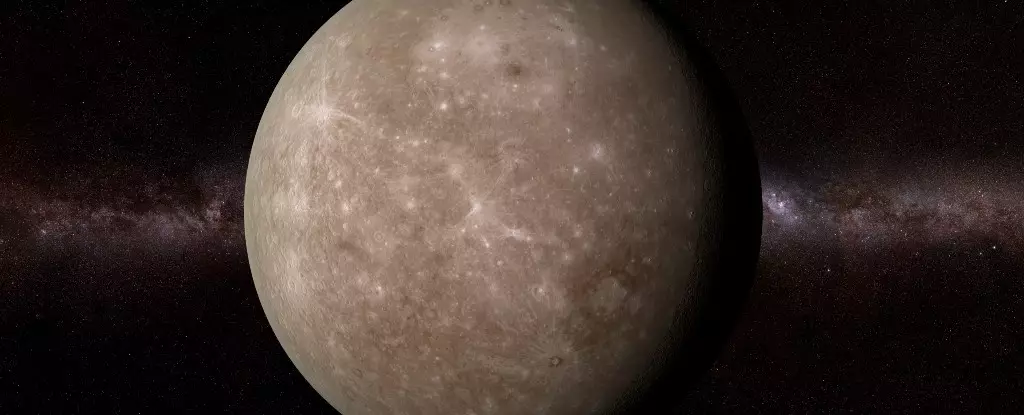After reassessing the gravity field models of Mercury, a team of scientists from research institutes in China and Belgium delved into the potential structuring of its internal environment. The recent MESSENGER missions provided data that suggests the dark patches on Mercury’s surface are mostly composed of carbon in the form of graphite, potentially originating from deep within the planet rather than external sources. This discovery sparked the idea that there might be a significant layer of solid diamond sandwiched between Mercury’s core and mantle.
Based on thermodynamic modeling and experiments, researchers proposed that the extreme conditions present in Mercury’s early stages could have facilitated the formation of solid diamond within its core. By considering a deeper core-mantle boundary with higher pressures, they simulated an environment in which diamond could crystalize within the molten core and gradually rise towards the mantle over time. The estimated thickness of this diamond layer is around 15 to 18 kilometers under the assumption of a sulfur content of approximately 11 percent.
The presence of a diamond layer in Mercury’s core could have far-reaching implications for our understanding of the planet’s evolution and internal dynamics. The exceptional thermal conductivity of diamond could influence models of planetary cooling and the generation of magnetic fields. Despite its small size, Mercury hosts a magnetic field, making it one of the few rocky planets besides Earth to exhibit this characteristic. The longevity of Mercury’s magnetic field relative to its size raises questions about the planet’s internal composition and the factors contributing to the persistence of its magnetic bubble.
The concept of a solid diamond layer within Mercury’s core challenges previous assumptions about the planet’s composition and history. The possibility of a significant reservoir of diamond hidden beneath the planet’s surface raises intriguing questions about the formation and evolution of rocky planets in our Solar System and beyond. By reevaluating Mercury’s internal structure, scientists may gain new insights into the processes that shape terrestrial worlds and the unique features they exhibit.
The hypothesis of a 15-kilometer thick layer of solid diamond in Mercury’s core introduces a fascinating new perspective on the planet’s early development. The discovery of this potential diamond treasure trove not only sheds light on Mercury’s internal environment but also sparks further investigations into the formation and dynamics of rocky planets. By reconsidering the nature of Mercury’s core-mantle boundary and reimagining its history, scientists are uncovering the mysteries hidden deep within the smallest planet in our Solar System.


Leave a Reply